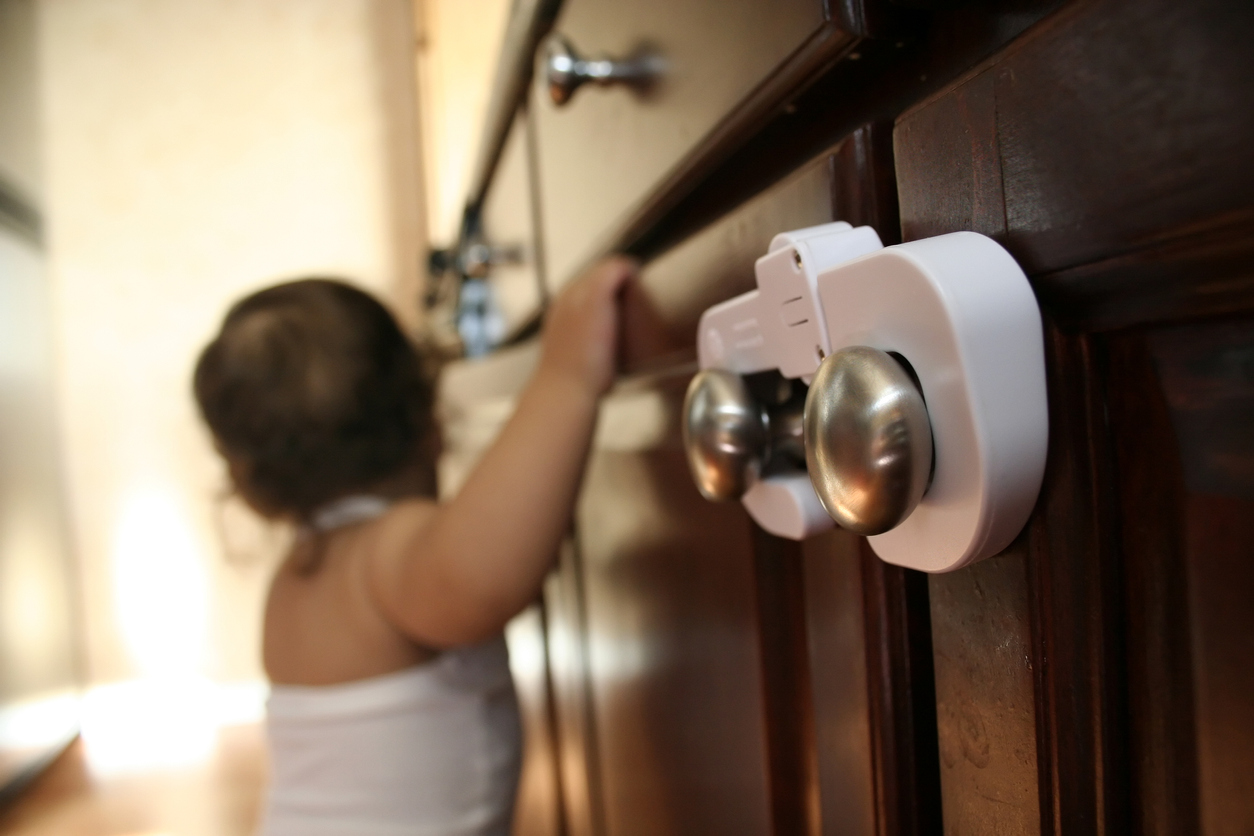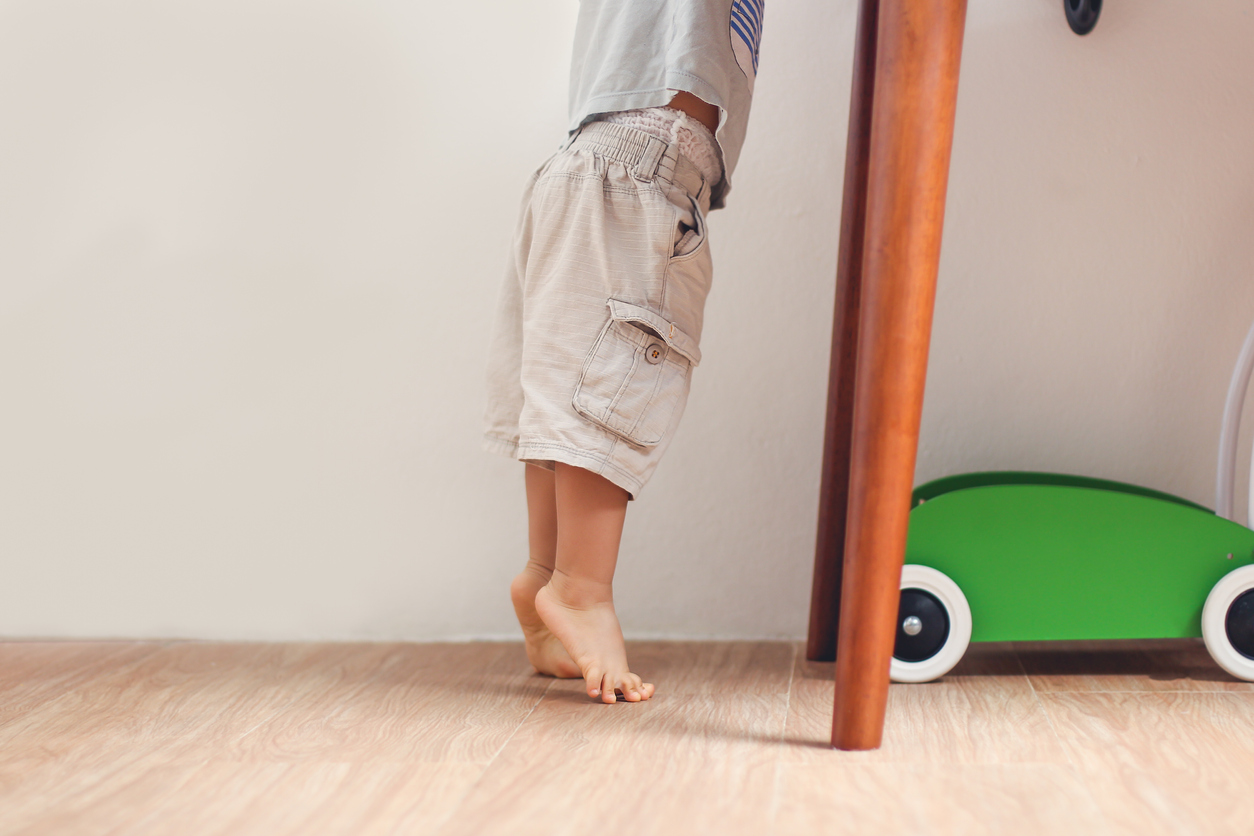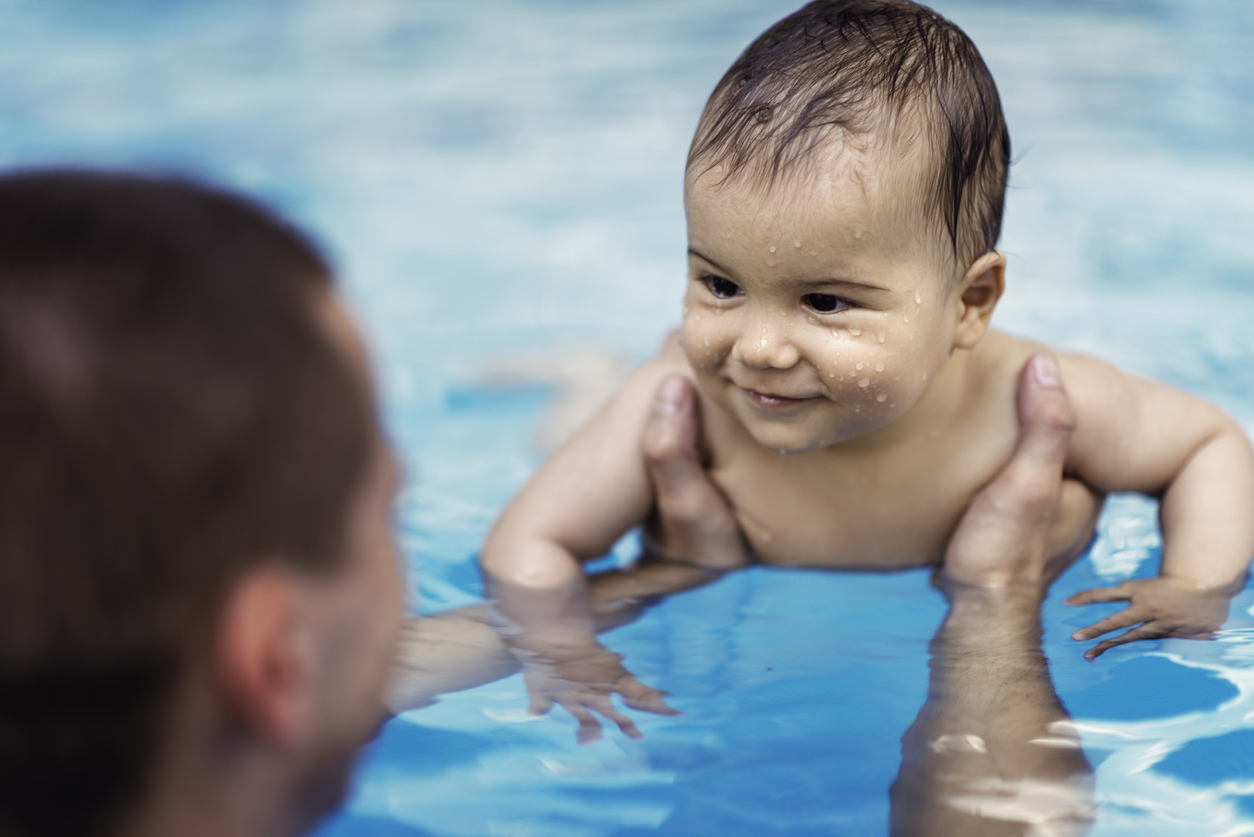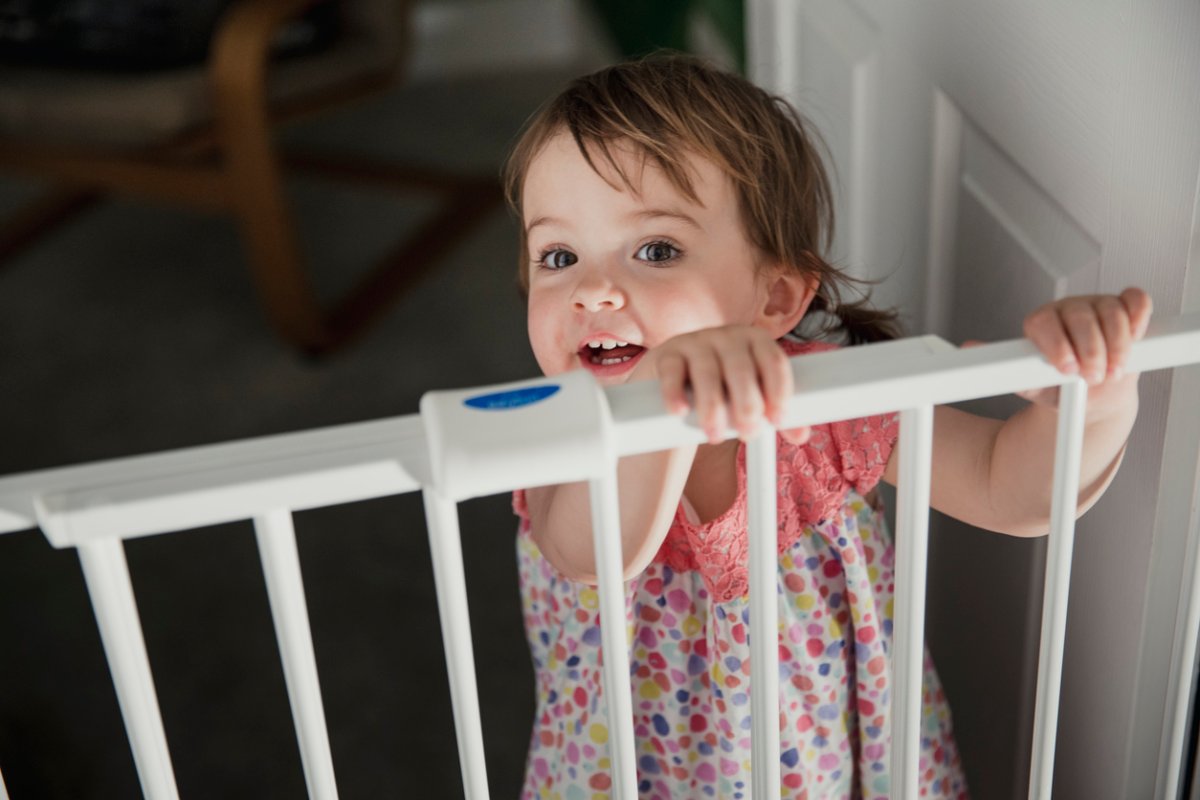We may earn revenue from the products available on this page and participate in affiliate programs. Learn More ›
One of the most important tasks for new parents is insuring the safety of their child. While the basics are generally covered before leaving the hospital—using a car seat, feeding them correctly, dressing them for the weather and preventive health care—home safety is often overlooked.
Before Baby Comes Home
There are some basic safety items that every home should have. Having a baby just makes them more urgent.
- Make sure smoke/carbon monoxide detectors are in good working order with fresh batteries. Once the baby arrives it will be harder remember to change them.
- Check your fire extinguishers, and be sure you have one in the kitchen and utility room.
- Verify that you have multiple exit routes in case of a fire.
- Test all the doors in your home to be sure they shut completely and cannot be opened without turning the knob.
- Consider using doorknob sleeves (view example on Amazon) for bathrooms, kitchens, and doors that lead to stairs, the garage, workshop, or other dangerous areas.
- Double check the water heater—it should be set to below 120 degrees to prevent scalding.

Crawling Babies and Toddlers
You have a few months before the baby becomes mobile, but it’s best to prepare for what they can get into. Walk through your house, then crawl, looking for dangerous areas.
- Gate off the kitchen and all stairways. An ambitious toddler can pull a chair and climb up just about anywhere.
- Keep all bathroom doors closed.
- Lock up, and put high and out of reach, any poison, cleaning product, chemicals, medicines, fertilizers, alcohol, spices, tools, knives, lighters, or items that can cause instant harm to your baby.
- Consider a refrigerator lock or latch (view example on Amazon).
- Install stove dial covers (view example on Amazon).
- Cover any unused electrical outlets with outlet plugs or sliding outlet covers and keep electrical cords out of reach (view example on Amazon).
- Ensure curtain cords are tied down and cut blind cords that are too long or form a loop. Keep blind and drape cords out of the child’s reach.
- Put childproof latches on all drawers and cabinets that are not intended for baby (view example on Amazon). If you leave a lower cabinet unlatched, be sure it is not connected to other locked cabinets on the inside.
- Pad sharp corners on furniture, cabinets, and counters.
- Secure furnishings, wall hangings, and shelves.

Furnishings, Wall Hangings, and Shelves
Anything your child can topple over presents a serious hazard.
- Install furniture straps (view example on Amazon) on any item that is top heavy or front heavy, including televisions, dressers, stoves, refrigerators, bookshelves, tall lamps, or statues.
- Ensure that all wall hangings within reach are well secured and will not come loose if tugged.
- Anchor shelves to the wall using brackets and screws. Use toggle bolts if necessary to ensure they will not pull out if toddlers try to climb the shelves.
Bathrooms
- Keep all bathroom doors closed.
- Never leave a child unattended in the bathtub.
- Buy toilet lid locks (view example on Amazon).
- Keep water temperature below 120 degrees Fahrenheit.
- Never leave a bucket with water in it.

Pool
Accidental drownings are a leading cause of death among children. Take all precautions to ensure that your child cannot reach the pool without an adult.
- Verify that all doors leading to the pool area have automatic safety locks that cannot be reached by small hands.
- Install a pool alarm (view example on Amazon).
- Install secondary gates to prevent a child from accessing the pool area once in the yard.
- Check that gates and fences meet safety standards for height, height off the ground, slat width, and latch position and design to prevent unwanted entry.
Baby Gear
Make sure baby gear meets all of the standards set by the Consumer Product Safety Commission and check their website for product recalls. Above all else, it is the parents’ and caregivers’ vigilance and caution that keep children safe.

